Since 2007 teams of dedicated ORCA Marine Mammal Surveyors have been invited onboard Saga’s cruise ships to provide guests with incredible wildlife experiences through delivering presentations, running deck-watches whilst surveying, and generally being on hand to talk about any wildlife seen on the trips. This Autumn, Christine, Paul, Lorraine and Fiona joined guests on board Saga’s Spirit of Discovery for an amazing trip to Canada, the USA and the Azores, and they had some incredible sightings!
Leaving Portsmouth to cross the Atlantic in late September, with storm force winds expected, the team knew the first day or so was going to be challenging with few opportunities to carry out any deck watches. As expected, the decks remained closed, and despite sighting a distant whale blow on the horizon from their cabin, they were unable to head out on deck to conduct a survey. Instead they were able to deliver their introductory presentation about ORCA’s work, and the wildlife guests may be lucky enough to see once the weather conditions improved! As with any wildlife watching, this is often more of a ‘wish list’ rather than an expectation, but the team remained optimistic.
At midday on their second full day at sea, it was announced that the decks were open! So, having layered up, the team headed to deck 13, where they were soon joined by guests enjoying the fresh air and keen to find out more about ORCA and what the team were doing onboard. Distant whale blows and a Fin whale were recorded during this first deck watch, a taste of what was to come!
Over the next few days, the ORCA team were joined on deck by keen and enthusiastic guests armed with binoculars and cameras. Deck 13 proved to be a great success, giving the team the opportunity to talk to anyone passing about the wildlife seen, and the sightings kept coming! Guests were soon viewing ‘superpods’ of Atlantic spotted dolphins, feeding frenzies of unidentified dolphins, and other wildlife including Cory’s shearwaters, petrels and even a turtle.
As they travelled further across the Atlantic the variety of species recorded increased. Some of the deep diving cetaceans were recorded including sperm whales, Cuvier’s beaked whales, and other unidentified beaked whales.
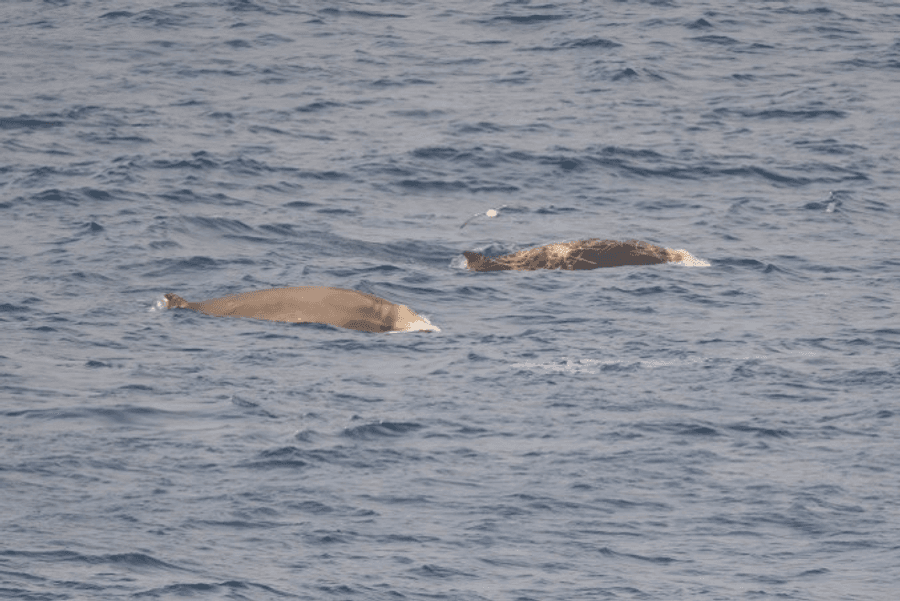
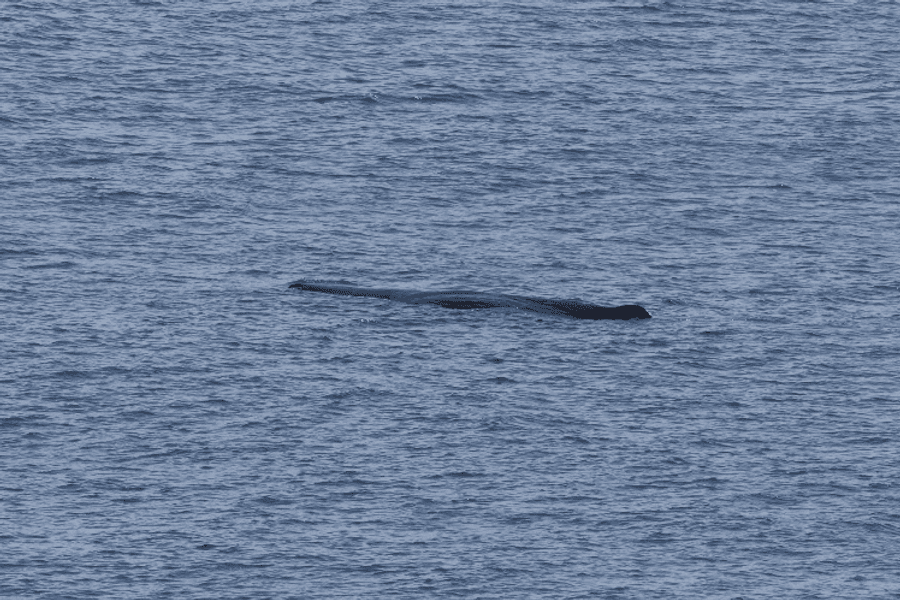
As well as distant sightings the team and guests were also getting amazing views of whales close to the ship. Guests were delighted to see fin whales, humpback whales, and minke whales, as well as common dolphins including a good view of a melanistic individual. This unusual colouration is caused by a gene mutation which increases the concentration of melanin in the dolphin, and is observed in a wide variety of species. Tuna were also spotted, leaping clear of the water. The team were thrilled to be joined on deck by so many keen wildlife watchers, with many guests rushing over at each shout of “sighting”!
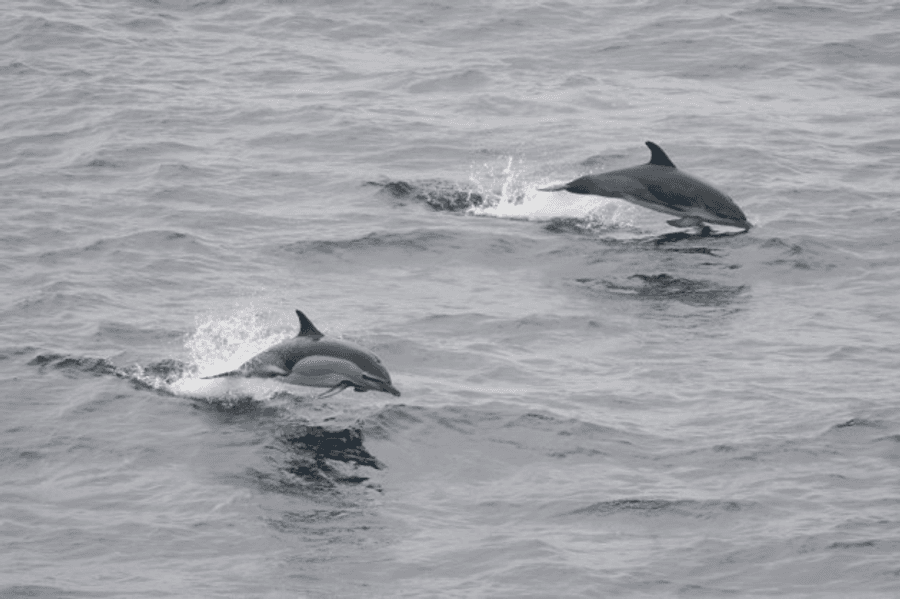
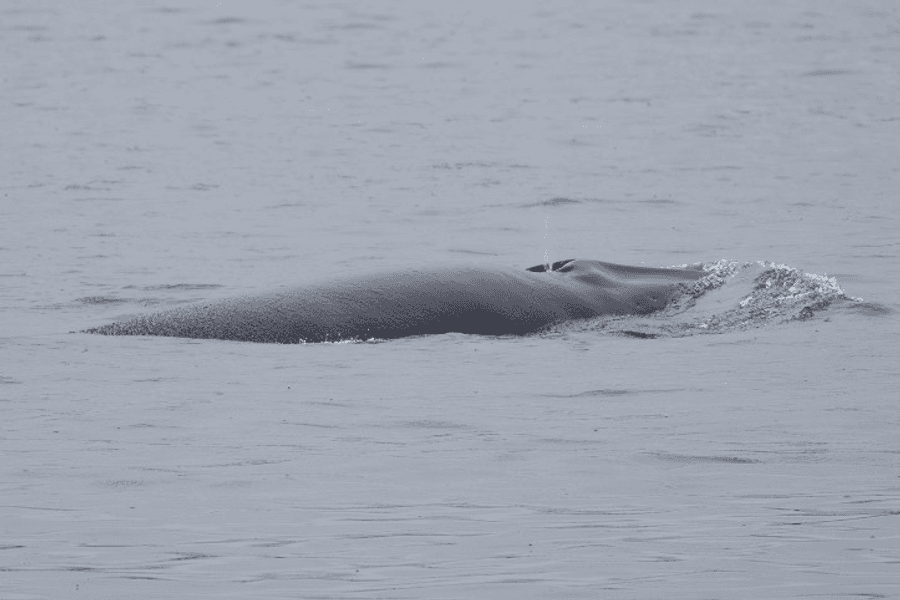
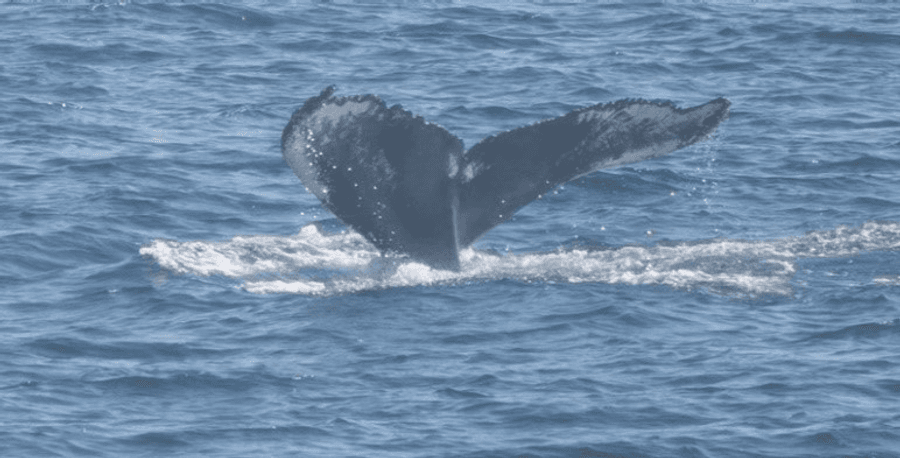
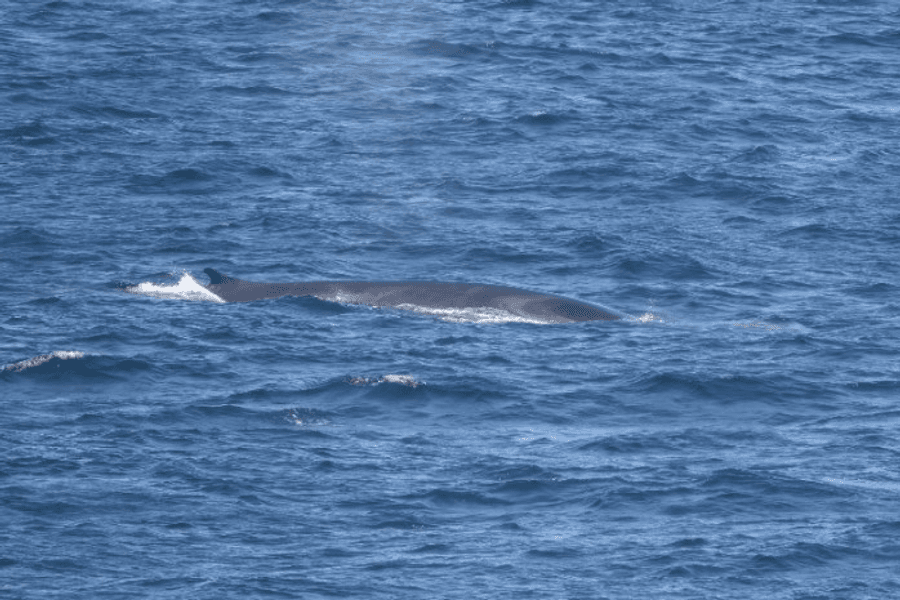
As the ship approached Halifax, Nova Scotia, the first port of call, the team started to see a number of small birds joining the ship including cedar waxwings, and a black throated green warbler but they also became aware of a pair of peregrine falcons who had taken up residence on the ship and were taking full advantage of the presence of these small birds! More amazing superpods of common dolphins allowed the team to explain to guests how ORCA uses the data they had been collecting on deck watches to calculate population abundance and density of these fascinating animals. Although no cetaceans were sighted on the ships approach into Boston, the team and guests were treated to some amazing views of harbour porpoise on the way into Portland, as well as a superb view of an osprey nest.
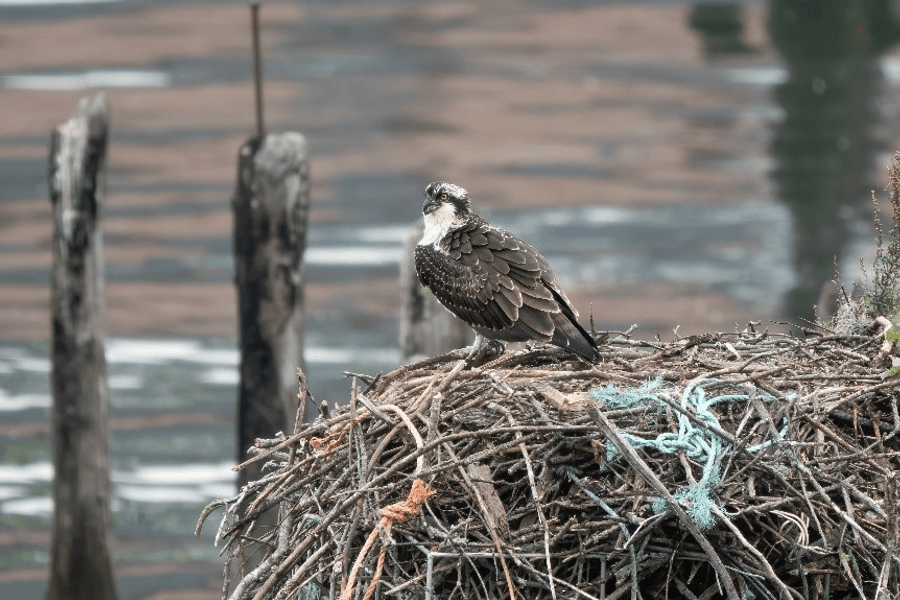
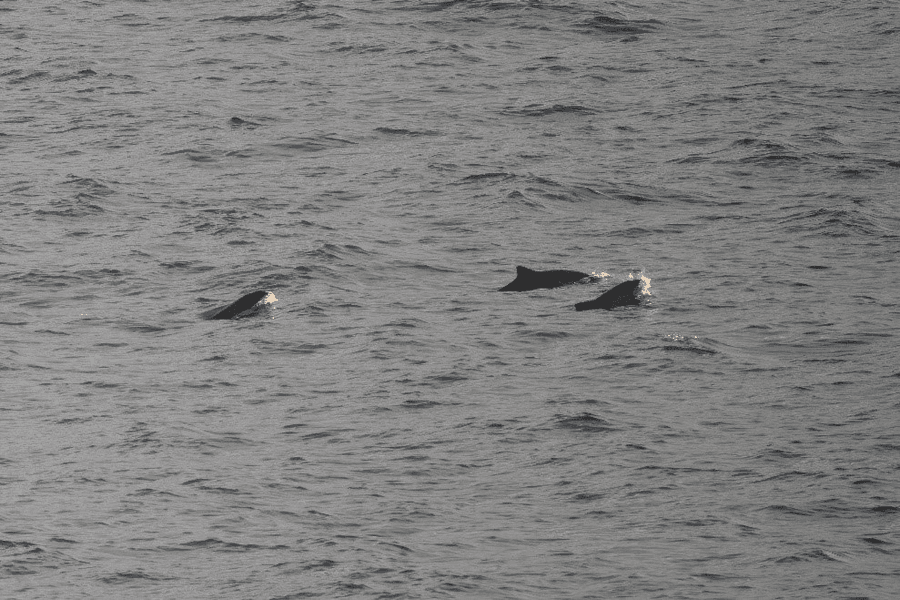
Next stop for the team was New York, and the sightings of dolphins continued. A highlight for the team and guests on this part of the trip was an amazing view of tuna leaping clear of the water to catch herring! The team also had excellent views of a turkey vulture when in port in Newport.
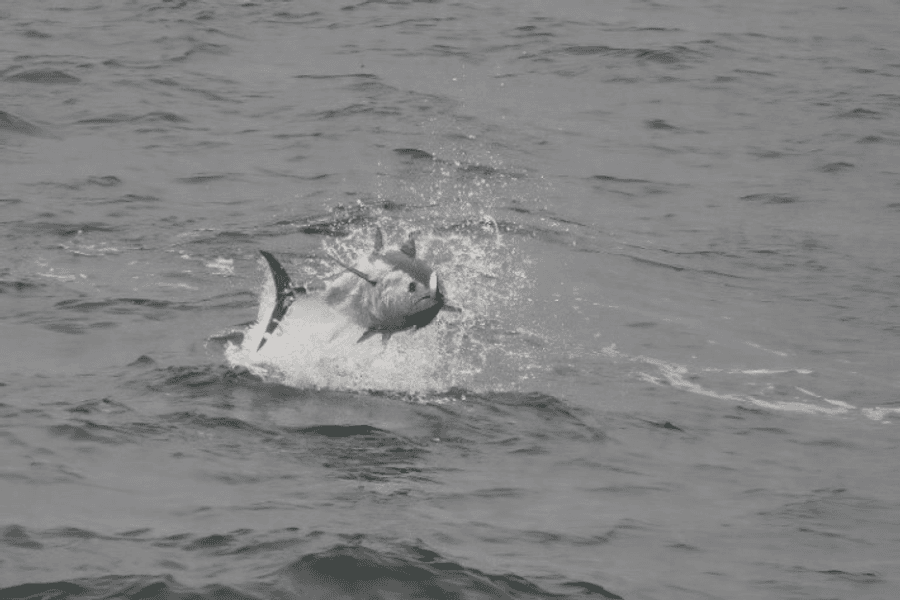
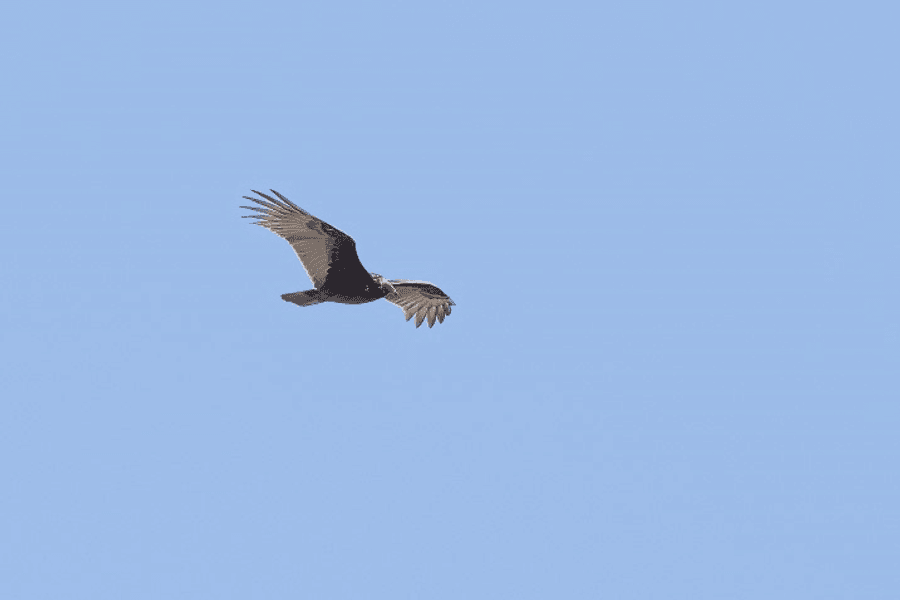
The team were excited to be leaving Newport and heading towards Eastport, as this is an area where it may be possible to see North Atlantic right whales. North Atlantic right whale populations were decimated by whalers in the 1900’s and since then their numbers have struggling to increase. Current estimates are that there are around 350 individuals left, and the species is classified as Critically Endangered. Many guests joined the team out on deck, aware that they were keeping an extra vigilant eye on the water. Everyone was rewarded with sightings of fin and humpback whales, common dolphins, and a few unidentified whales and dolphins, but no North Atlantic right whales…yet.
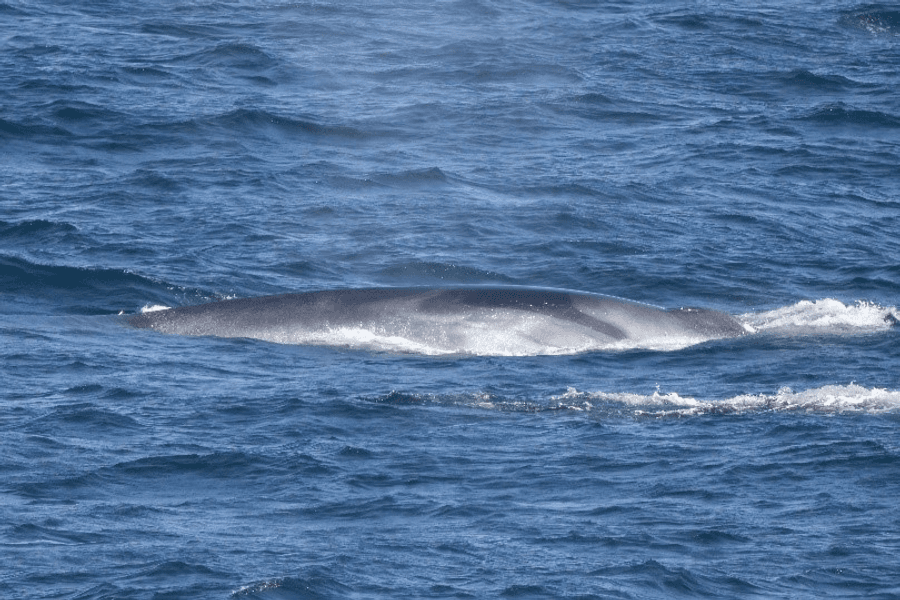
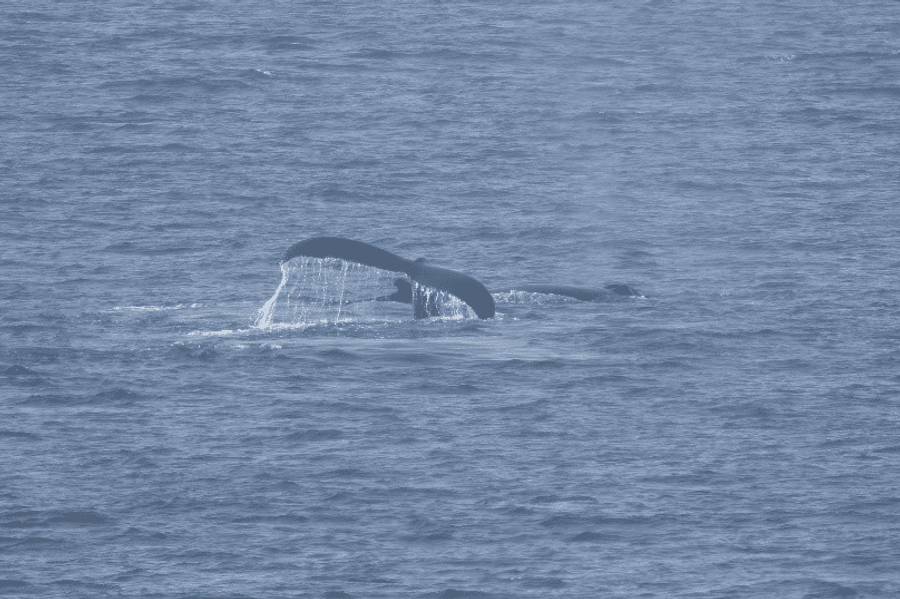
The next morning, the team were excited to be out on deck at sunrise for a deck watch. Minke whales and harbour porpoise were recorded, and then a blow was seen very close to land. The team used their binoculars to scan the area and look for any key features to enable them to accurately identify the species. This animal had no dorsal fin, a large head, a curved jaw, and visible callosities on their head…the team had spotted a North Atlantic right whale! The team and guests were overwhelmed with emotion at seeing this amazing and rare species, and were able to see the animal swim along the shoreline before it dived out of sight. This sighting was reported to the bridge of the ship and the Canadian authorities, who were able to identify the animal as a 12-year-old female with the identification number #4191. The team were thrilled to be able to share with guests that this individual was yet to have a calf, but has since been sighted in the same area in the company of two male North Atlantic right whales.
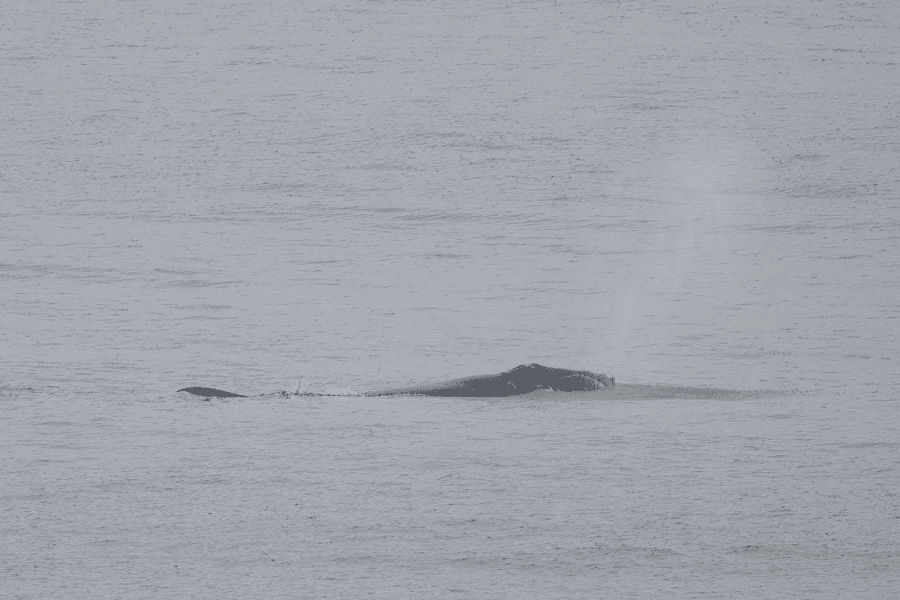
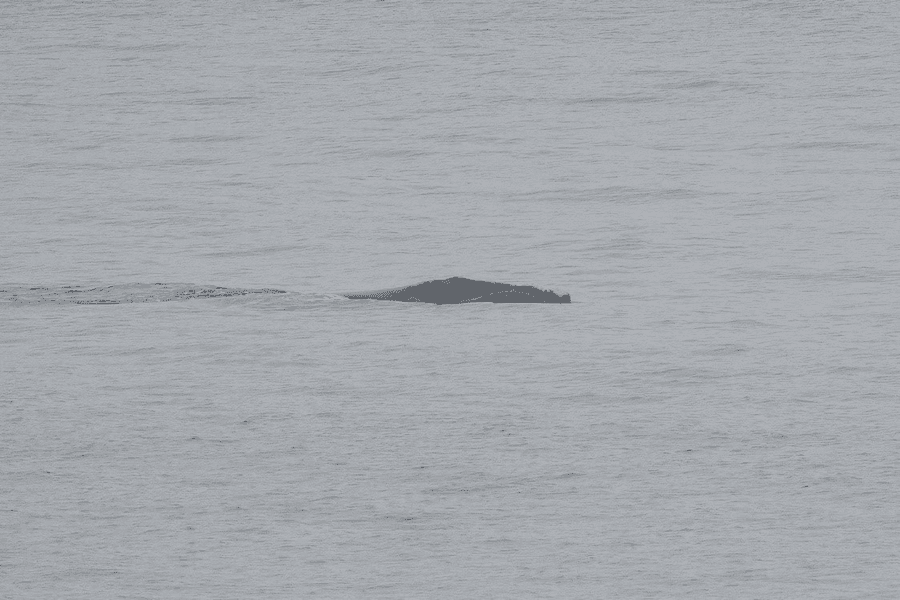
During their time in Eastport, a number of guests enjoyed whale watching trips with sightings of minke whales and harbour porpoise. On their way from Saint John to Sydney, the team and guests were treated to more sightings from the decks of the Spirit of Discovery, including the largest animal to have ever lived, the blue whale! Due to another storm heading in their direction, the team had limited opportunities to get out on deck on their way to the Azores, but still managed to record more pods of common dolphins, and a small pod of unidentified dolphins.
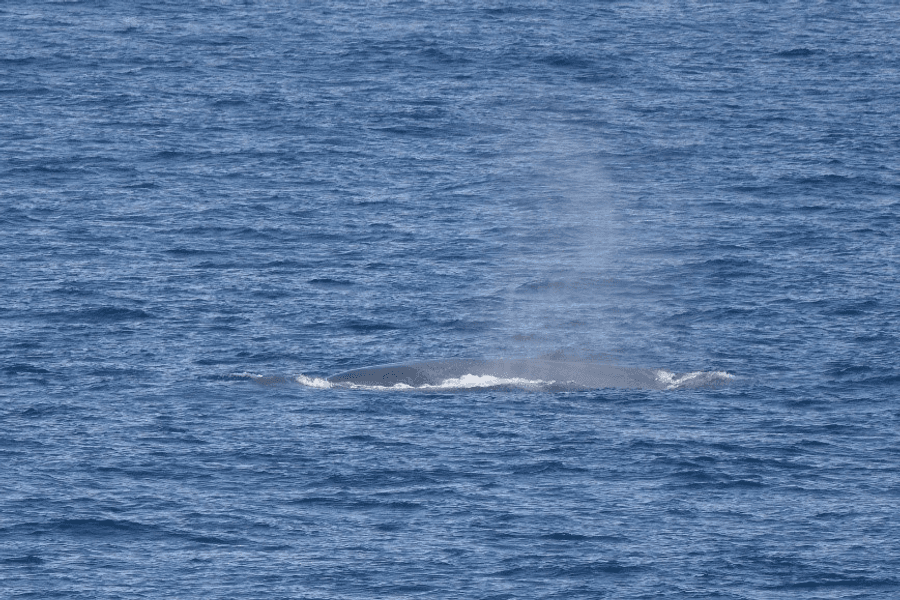
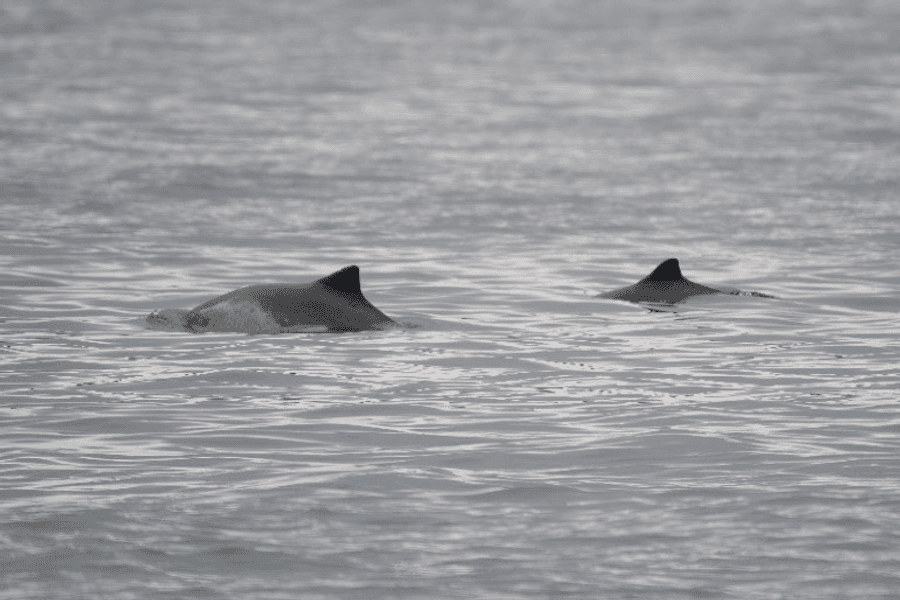
After a stop in Ponta Delgada, in the Azores, the team and guests started the journey back to the UK. Although the trip was almost over, the ORCA team knew that the area near the Bay of Biscay was a hot spot for cetacean activity and were keen to get out on deck to conduct more surveys. They were rewarded with sightings of fin whales, common dolphins and pilot whales, which was a lovely end to a fantastic trip for the ORCA team and guests onboard Saga’s Spirit of Discovery.
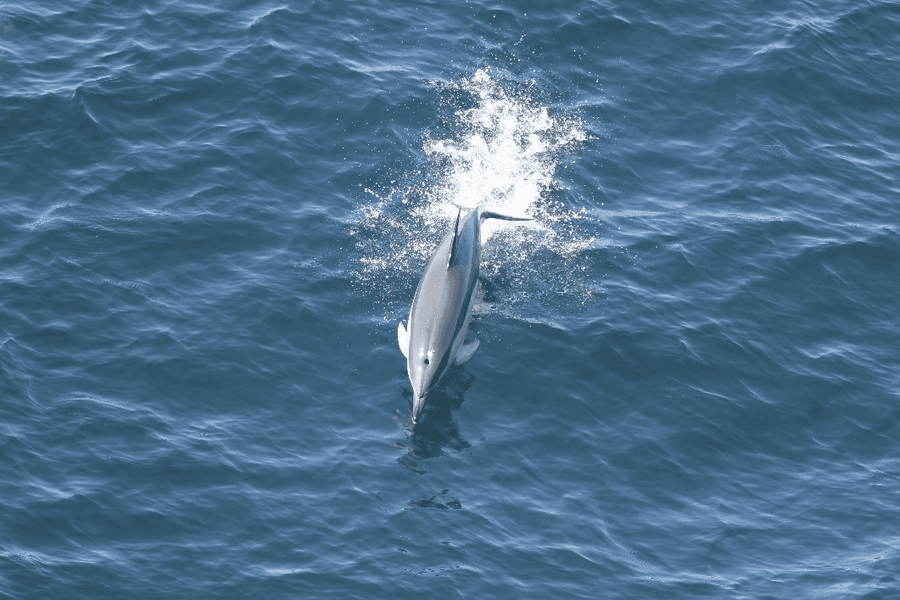
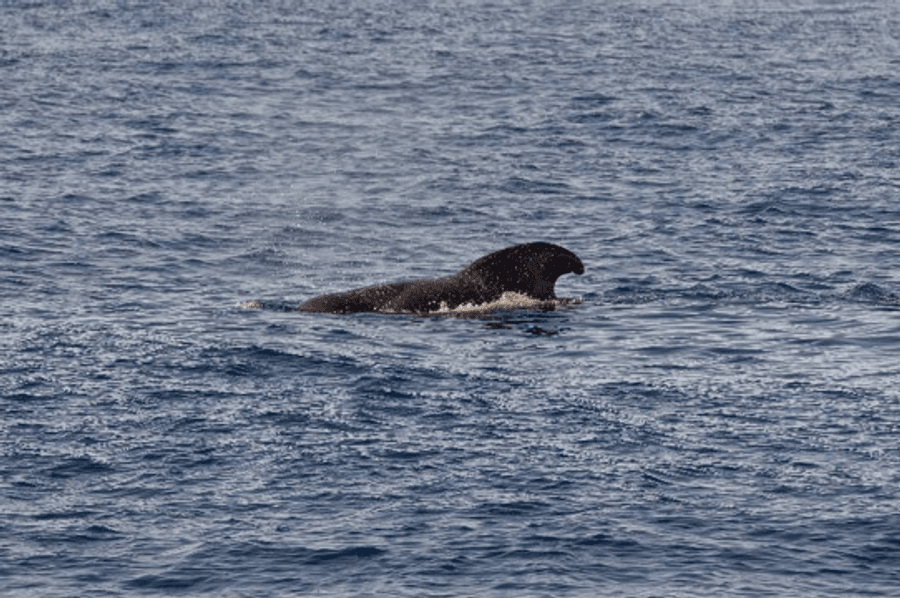
The only way we can protect whales and dolphins is by understanding them, and so monitoring is vital for effective conservation. Donate today to help ORCA continue to identify and study important whale hotspots around the world by visiting www.orca.org.uk/donate
*All photos taken by ORCA Marine Mammal Surveyor, Paul Soulby

